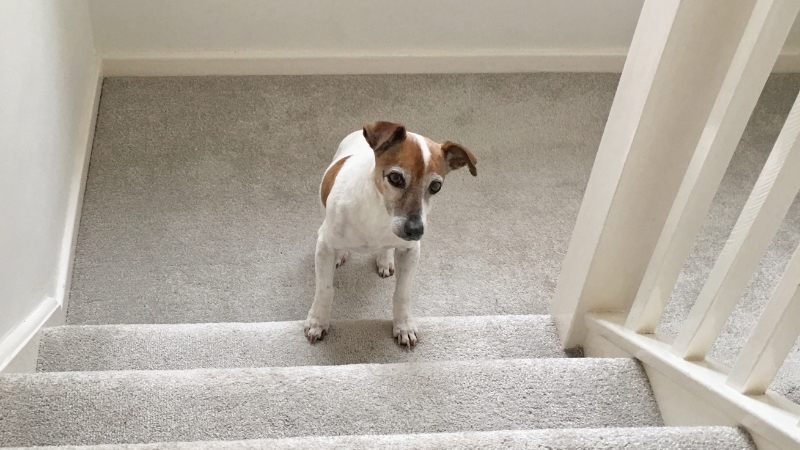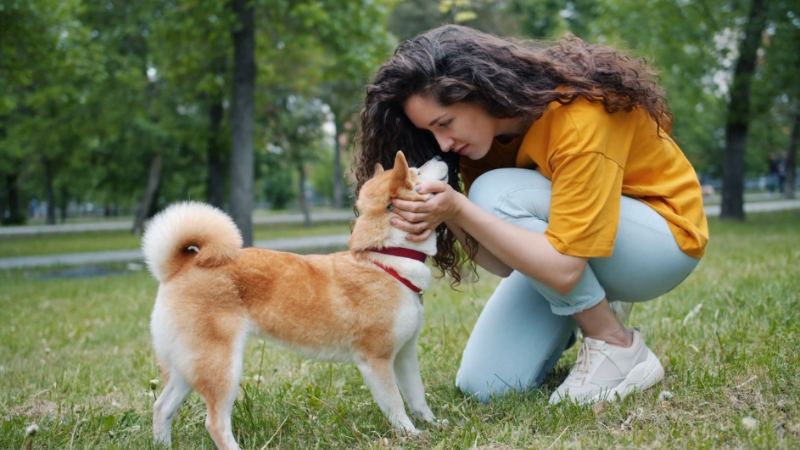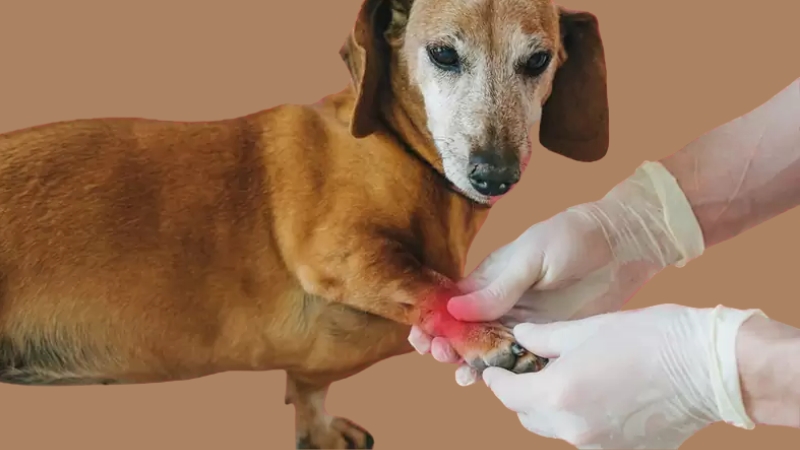You probably know your dog better than anyone. The way they trot to the food bowl, that little tail wag when you grab the leash, even the subtle eye-roll when you’re five minutes late with dinner.
So it can be surprising when something serious like arthritis sneaks up on them, and you didn’t even see it coming.
The thing is, arthritis in dogs doesn’t always start with a limp or a dramatic yelp of pain. Sometimes, it starts with the tiniest shift in behavior. A slower stand-up.
A skipped jump on the couch. A weird hesitation on the stairs. And most of us chalk it up to “just getting older,” which isn’t wrong… but it’s not the full picture either.
Here’s the real kicker: Early arthritis can be managed. But you’ve got to catch it. The earlier, the better.
Let’s talk about the signs you might not realize are pointing toward joint pain, why they matter, and what you can do before your dog is hurting.
The Not-So-Obvious Signals: What Early Arthritis Looks Like
View this post on Instagram
Forget the classic movie-style limp. That usually shows up later. In the beginning, the signs are quieter, almost casual. Here are some of the most overlooked clues:
1. Slower to Get Up or Lie Down
Picture your dog getting up after a nap. Used to be quick, right? Maybe now it’s more of a “stretch… pause… shuffle” situation. That stiffness, especially after sleep, is a hallmark of early joint inflammation.
It’s subtle at first. You might see:
- A push with the front legs, slower movement in the back end
- Awkward shifts from lying down to sitting, or standing
- Extra stretching, especially in the morning
Sound familiar? You’re not alone. It’s one of the most commonly dismissed early signs.
2. Avoiding Stairs or Jumping Up

You might catch your pup hanging back at the base of the stairs or needing a little encouragement to jump into the car.
This is often chalked up to “stubbornness” or even anxiety. But in many cases, it’s a calculation. Going up puts pressure on the back legs. Coming down? That’s harder on the front. If there’s pain in the hips, elbows, or knees, stairs start looking like Everest.
What to look for:
- Hesitation or refusal at the stairs
- Jumping onto the couch one paw at a time (or skipping it altogether)
- Waiting for a boost into the car or bed
If they used to leap like a superhero and now it’s more of a step-by-step struggle, it’s time to take note.
3. Decreased Interest in Walks or Play
Most dogs don’t fake disinterest in walks. If yours suddenly doesn’t care when you grab the leash, or lags on a favorite trail, something’s up.
It could be fatigue, sure. But often, it’s discomfort.
Early arthritis causes low-grade, chronic soreness. Dogs might still want to chase the ball… they just know they’ll pay for it later. So they opt out.
Pay attention to:
- Shorter play sessions
- Napping more during the day
- Losing interest in fetch or tug games
Pain changes behavior long before it causes dramatic limping.
4. Getting Cranky About Being Touched

Has your easygoing dog suddenly started flinching when you pet their hips or pick them up? Maybe they growl a little during brushing. Maybe they avoid snuggling altogether.
That’s not sass. That’s a warning shot.
Common behavior changes tied to joint discomfort:
- Growling or snapping during grooming or handling
- Avoiding cuddles or touch
- Licking or nibbling at joints (especially wrists, knees, elbows)
5. Changes in Posture or Gait
You don’t need to be a vet to spot a change in how your dog moves. Watch how they walk and stand when they don’t know you’re watching.
Here’s what early-stage compensation can look like:
- Shifting weight forward (off the back legs)
- “Bunny hopping” with the hind legs
- Tucked tail, arched back, or stiff front legs
A side-by-side video comparison over a few weeks can be shockingly helpful. (Seriously—record your dog walking on your phone and check back in a month.)
Breeds That Tend to Show Symptoms Earlier

Some dogs are just more prone to arthritis. Genetics, body structure, and even growth rate can all factor in. If you’ve got one of the following breeds, pay extra attention to early signs:
High-Risk Breeds
Common Trouble Spots
Labrador Retriever
Hips, elbows
German Shepherd
Hips, spine
Golden Retriever
Hips, shoulders
Rottweiler
Hips, knees
Dachshund
Spine (IVDD can mimic arthritis)
Boxer
Knees, shoulders
Bernese Mountain Dog
Hips, elbows
Of course, arthritis doesn’t play favorites. Any dog, mixed breed or mutt, can develop it. But if yours is on that list, early screening and regular vet visits go a long way.
What You Can Do (Before the Limp)
Spotting arthritis early doesn’t mean you’re signing up for a never-ending cycle of meds or dramatic vet bills. When you catch it early, the solutions are usually simple, and don’t involve surgery or a pharmacy receipt as long as your arm.
First Stop: The Vet
If your dog’s been showing even subtle changes, slower to get up, skipping stairs, not as into play, it’s worth booking an exam.
A good vet will pick up on stiffness you might miss, and they’ll probably suggest imaging like X-rays if anything seems off.
It’s not about jumping to conclusions. It’s about ruling things out and getting ahead of problems that can snowball if left alone.
During that visit, it helps to ask a few key questions. Some of the early support options can do a lot of heavy lifting if you start them soon enough.
What to Ask
Why It Matters
Joint supplements like glucosamine
Helps maintain cartilage health and reduce inflammation in aging joints
Omega-3 fatty acids
Natural anti-inflammatories that can ease pain and improve mobility
Low-dose anti-inflammatories
Can gently reduce daily soreness before it becomes constant pain
You’re not chasing a cure here. You’re giving your dog a better shot at staying active without pain, running the show.
Make Life Easier at Home
This part can be weirdly satisfying because the changes are quick, inexpensive, and they work.
Arthritis often turns simple things (like hardwood floors or high beds) into awkward, even painful, challenges for your dog. Making a few changes can take the daily strain off their joints in a big way.
Think of it as upgrading their environment to meet them where they are now, not where they used to be at two years old.
Problem
Simple Fix
Slippery floors
Add rugs, runners, or foam mats in high-traffic areas
High surfaces (like beds or cars)
Install ramps or pet stairs to reduce the need to jump
Straining to eat or drink
Use raised food and water bowls to support a more natural neck posture
Poor sleep or pressure on joints
Switch to an orthopedic dog bed with firm, even support
You don’t need to redo your whole house. Even one or two adjustments can make your dog more confident and relaxed during daily routines.
Keep Them Moving—But Smartly
Some important comments at the end of this article in how you should fit a harness for your dog to ensure it doesn’t impact on their mobility 👇 https://t.co/0uytYpT4ZS
— Canine Arthritis Management (@CAMarthritis) February 6, 2019
Now’s not the time to stop all activity. Movement is crucial. But the goal shifts from burning energy to preserving joint function.
Dogs with early arthritis benefit most from low-impact, consistent movement.
What you want to avoid is high-intensity, weekend-only chaos. That “crash and burn” exercise pattern is hard on even healthy joints, let alone aging or inflamed ones.
Here’s the rhythm that usually works best:
Old Routine
New, Joint-Friendly Version
All-out fetch sessions
Shorter walks spread through the day
Skipping walks, then doing a long hike
Daily, predictable exercise in smaller chunks
Running on pavement
Walking on grass or dirt trails, or even better—swimming
High jumps or sudden turns
Gentle leash walking, sniff time, and steady pace movement
Swimming, in particular, can be a game-changer if you’ve got access to a dog-friendly pool or a calm lake.
No joint stress, full-body movement, and most dogs love it once they get the hang of it.
The One Thing You Shouldn’t Wait For
If you’re waiting for a dramatic limp or a heartbreaking cry of pain to take action… please don’t.
Dogs are ridiculously good at hiding pain. It’s a survival instinct going back thousands of years. In the wild, showing weakness could be dangerous. So they tough it out. Even when it hurts.
That’s why the subtle stuff—those little hesitations, that slower walk, the skipped jump—is such a big deal. It’s their way of asking for help, without making a fuss.
And when you respond early, you can slow the progression. That’s not hype—it’s solid veterinary science. Early intervention means:
- Less pain long-term
- Fewer medications later
- Better mobility in senior years
So if your gut’s telling you something’s a little off with your pup? Trust it. Take notes. Talk to your vet.
Real Talk
@nanobytesinc First signs of #Arthritis in your #dog ♬ original sound – NanoBytesInc
Let’s get one thing clear: arthritis isn’t a sentence—it’s just a diagnosis. And there are tons of things you can do to help your dog stay comfortable, active, and happy.
Modern treatments are miles ahead of what they used to be.
We’re talking acupuncture, physical therapy, laser treatments, tailored diets, even stem cell options in some places.
But it all starts with catching those early whispers of discomfort before they turn into a scream.
So maybe your dog doesn’t look like they’re in pain. Maybe they just seem “a little older.” But age isn’t the problem. Unnoticed joint pain is.
Final Thought
If you’ve made it this far, odds are you’re the kind of dog person who pays attention. The kind who notices when something’s just a bit off. That’s your superpower.
Early arthritis isn’t always loud, but it is speaking. And now you know what to look for.
Your dog may never say “ouch,” but they’ll say “help” in the only way they can: by slowing down, sitting out, or subtly shifting how they move.
Now you know better. Now you can do better.
And honestly? That’s the whole point.







